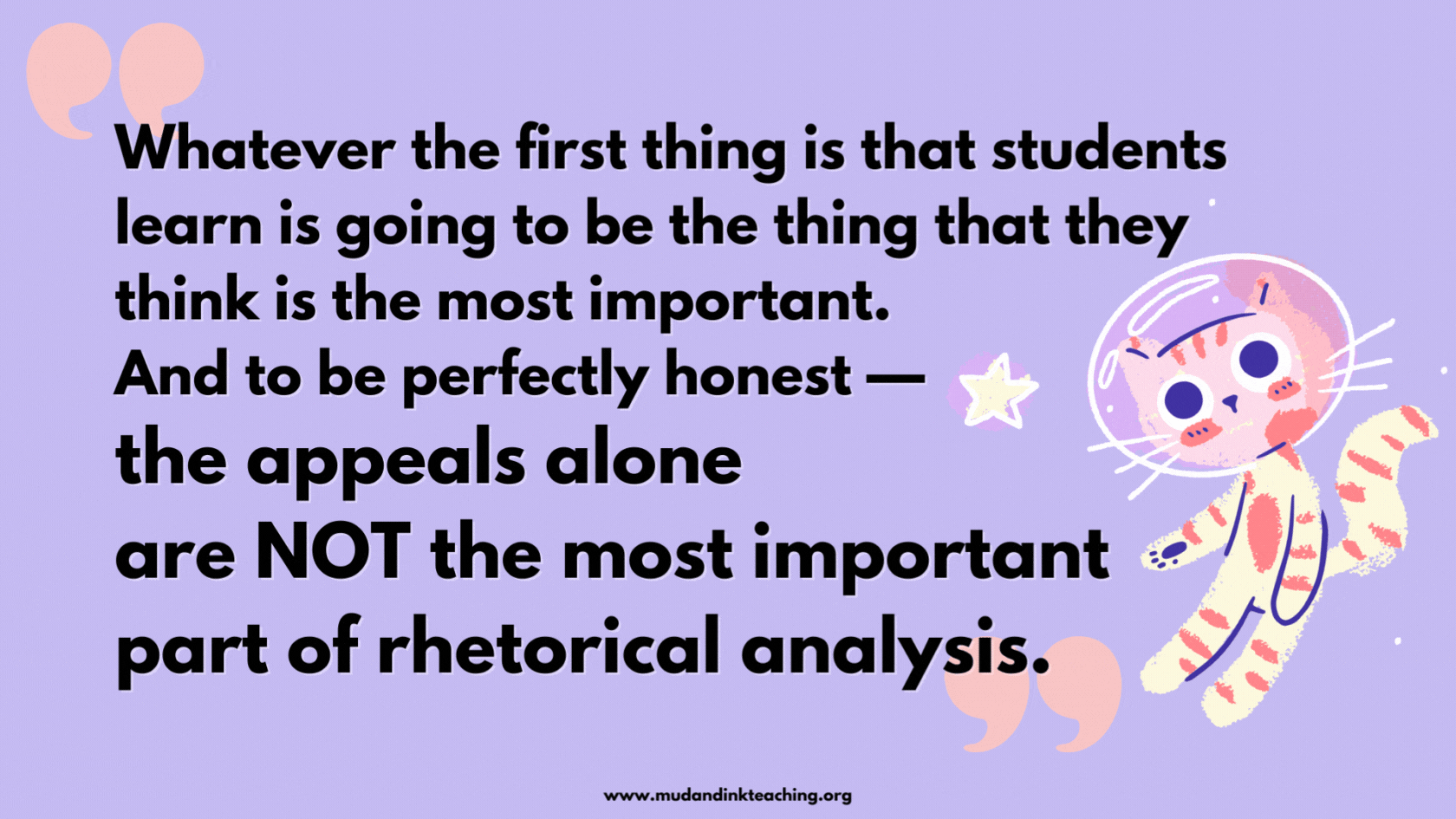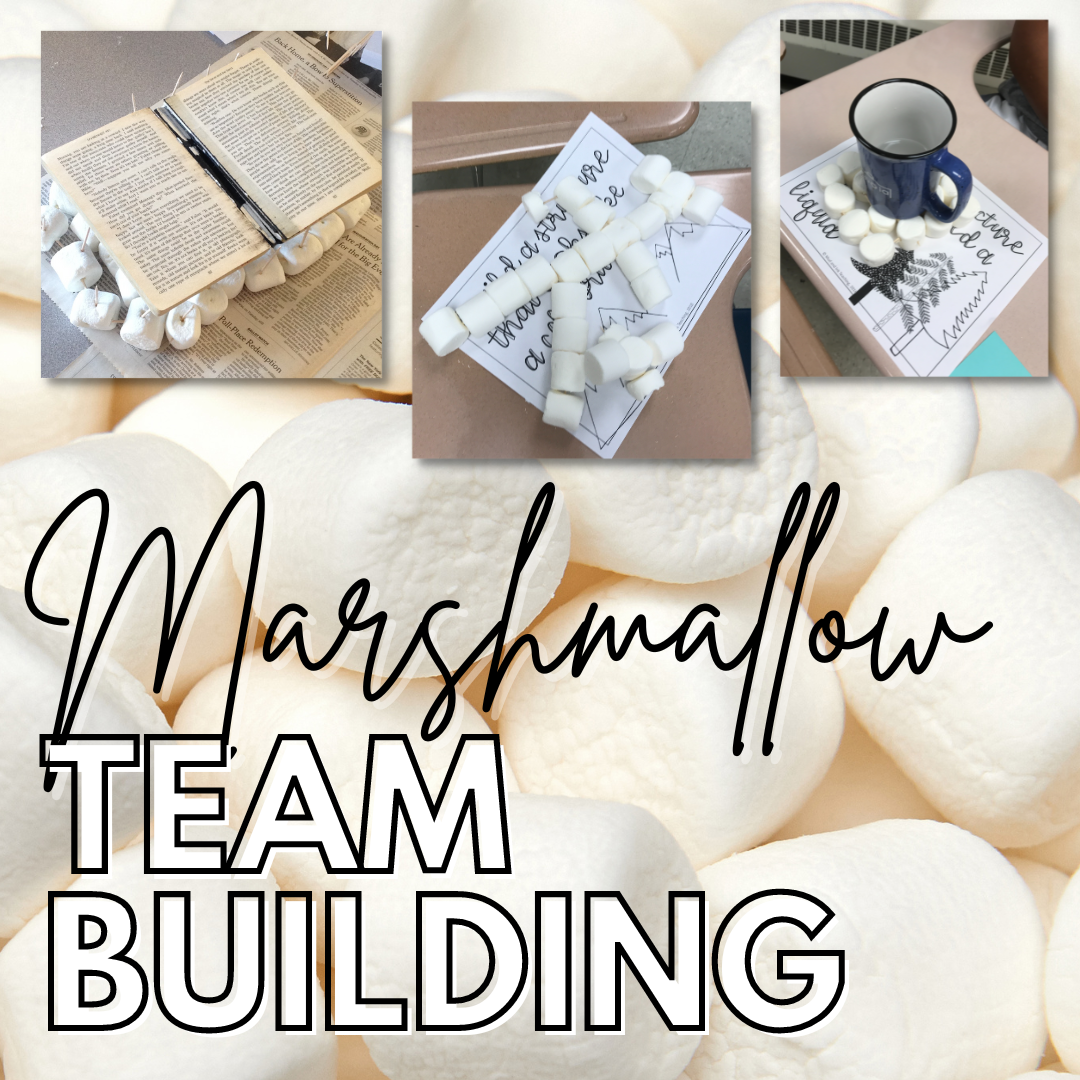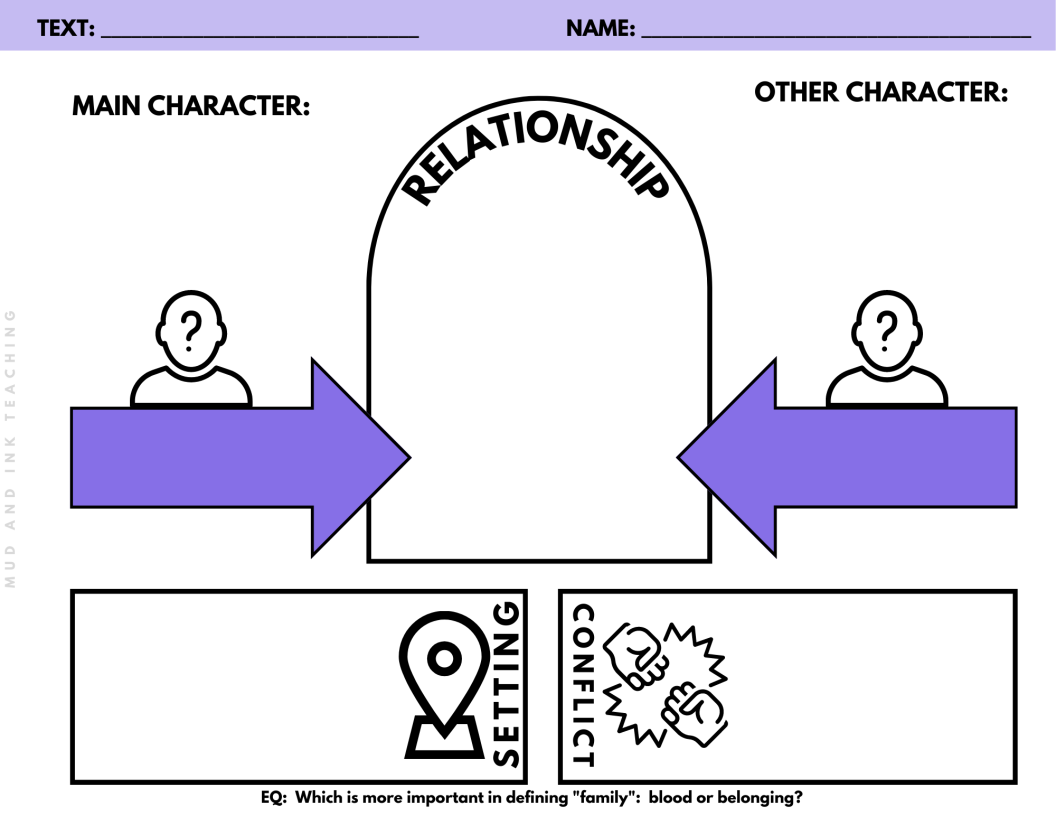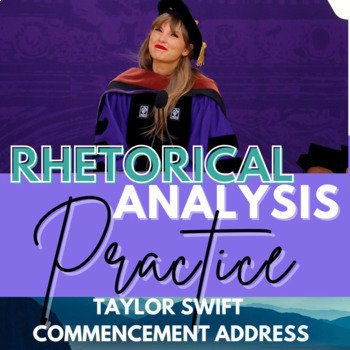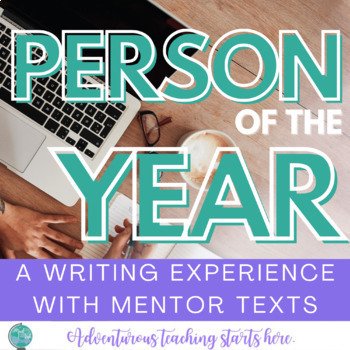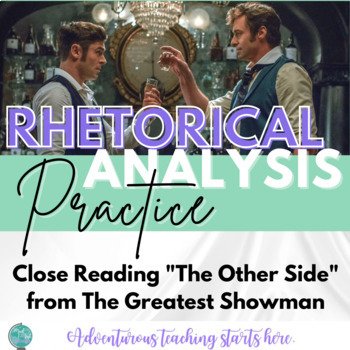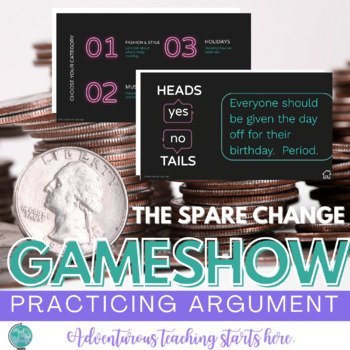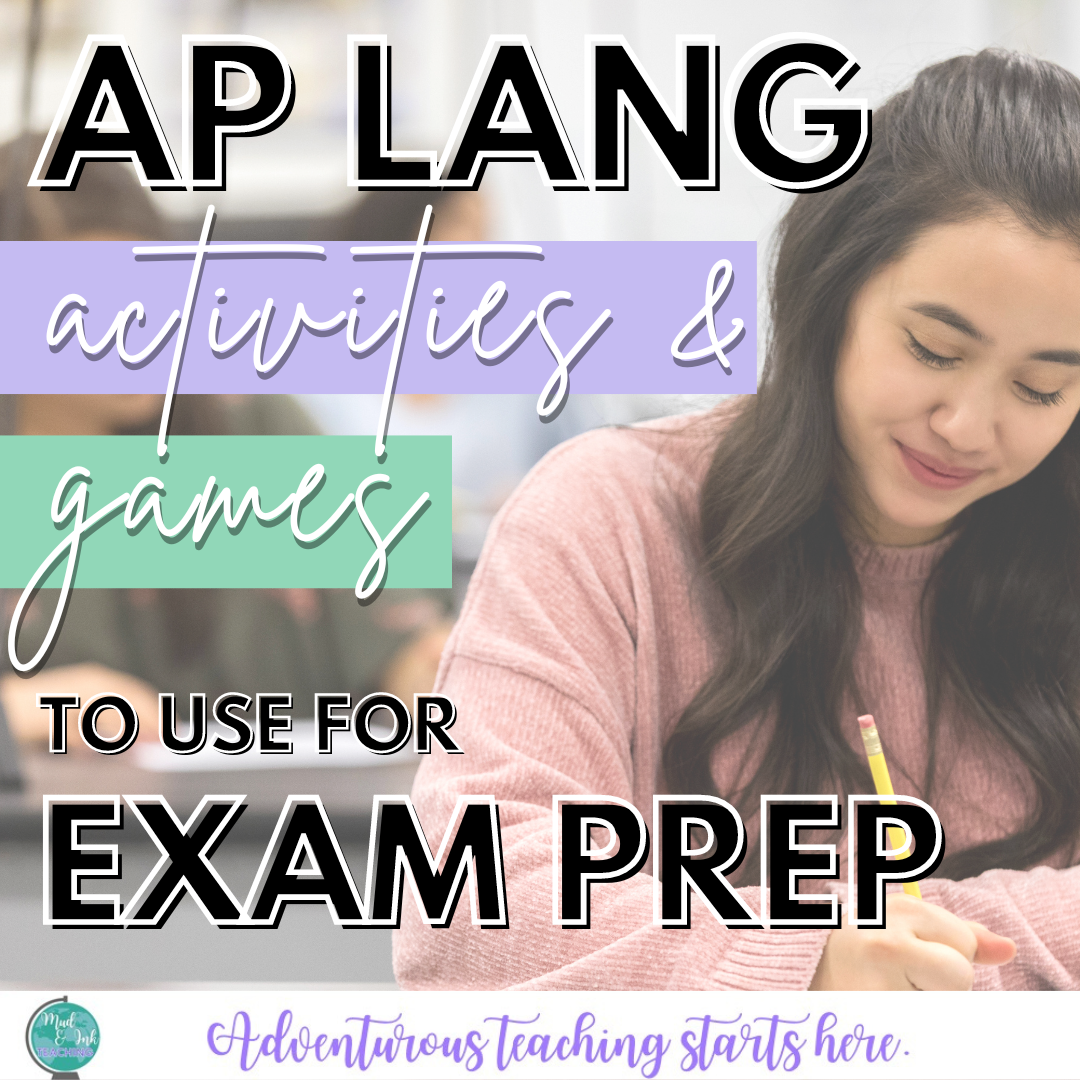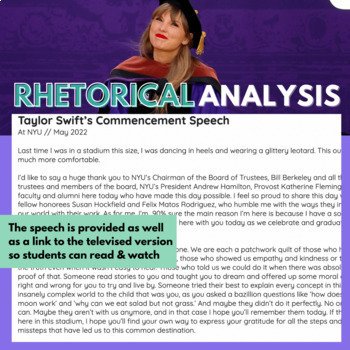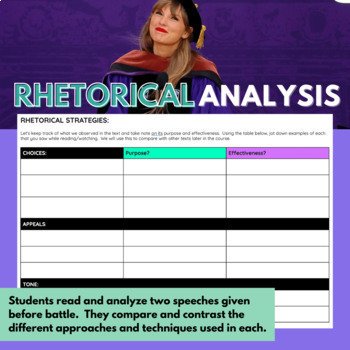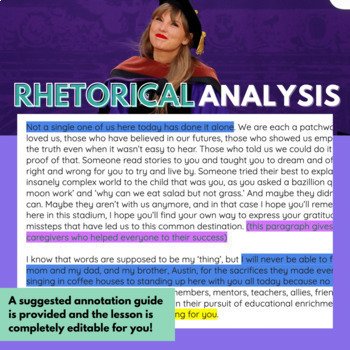
ADVENTUROUS TEACHING STARTS HERE.
20 Speeches and Text for Introducing SPACE CAT and Rhetorical Analysis
During the introductory phases of teaching rhetorical analysis, you need to start off with texts that are approachable and teachable. This helps to build student confidence as the texts get harder and harder each year. Here are 20 places where you can start that journey confidently!
When it comes to introducing rhetorical analysis for the first time, choosing texts can feel like an intimidating task. But before you get bogged down with which text to pick, let’s talk through a few initial steps to help ensure your success.
TIP #1: Begin with a Framework
When I first was told to “teach rhetoric”, I had virtually no training or support. I resorted to what I knew from my undergrad: an overview powerpoint about ethos, pathos, and logos. This is exactly the path that I would actively AVOID if at all possible (I’ve written about that more here), and instead begin by introducing students to the framework that you’ll use in order to do the work of analysis. For me, I’ve found SPACE CAT to be my favorite ( BTW, I also do this with poetry using The Big 6).
TIP #2: SKIP ETHOS, PATHOS, LOGOS IN YOUR INTRO
Okay — hear me out. I’m not saying don’t teach ethos, pathos, or logos. I’m saying don’t use that as an INTRODUCTION to rhetoric.
Here’s why:
Whatever the first thing is that students learn is going to be the thing that they think is the most important. And to be perfectly honest — the appeals alone are NOT the most important part of rhetorical analysis.
So what to do instead? Introduce the RHETORICAL TRIANGLE.
The Rhetorical Triangle sets students up to see the ways in which an argument moves from one person to another. It centers students on their role as analysts and the need to be inside of the argument - not outside attacking it with a highlighter.
For two more in-depth discussions and lesson examples on the rhetorical triangle, start here:
“Be Our Guest” from Disney’s Beauty and the Beast
“Mother Knows Best” from Disney’s Tangled
TIP #3: TEACH ON REPEAT
If you’ve not started “template teaching” let me encourage you to make this the day that you start. As you browse through the list below, try to think of these texts as opportunities to teach and reteach the same skills over and over — not a daunting list of individual lesson plans.
Begin by introducing the rhetorical triangle and situation using either of the two lessons listed above. During those lessons, introduce students to the rhetorical triangle graphic organizer template and help them become well acquainted. This graphic organizer will be the TEMPLATE to print and repeat for every lesson hereafter.
Once students are ready to move to more challenging texts, start movin’. What’s the lesson? It’s all baked in to your graphic organizer template. Using just that one handout, students can do a huge variety of tasks all with varying levels of challenge and independence. Here are a few ideas:
In small groups, bullet point details about the speaker. SHUFFLE GROUPS, and in the new group, bullet point details about the audience, SHUFFLE GROUPS, and in the new group bullet point details about the context. Repeat as needed for each element of SPACE.
Read/watch the text together. Complete S - P - A together and assign C - E to work on in pairs
Put students in small groups. Designate areas/tables around your room as S, P, A, C, and E. Have students move through each station with their group and their handout to analyze the text.
Have students choose any text from a provided list and complete the graphic organizer independently for homework / individual work
This template allows you to flex the details of your lesson without having to prep brand new handouts for every single new text!
THE LIST YOU’VE BEEN WAITING FOR: THE BEST TEXTS FOR INTRODUCING SPACE CAT
This list comes both from personal experience and teacher recommendations. If you have experience or more ideas, please feel free to add them to the comments at the end of this post!
“The Other Side” from The Greatest Showman
Battle speeches from Queen Magra and Baba Voss from the Apple TV Series See
“Be Prepared” from Disney’s The Lion King
“I’ll Make a Man Out of You” from Disney’s Mulan
“Under the Sea” from Disney’s The Little Mermaid
“How to Mark a Book” by Mortimer Adler
“Farewell to Baseball” Lou Gherig
Challenger Speech from Ronald Reagan (and grab my close reading template for this speech here)
9/11 Address from George W. Bush
“Offensive Play” by Malcolm Gladwell
Back to School Commercials
What would you add to this list? I’d love to hear it in the comments below!
Happy teaching!
RHETORICAL ANALYSIS RESOURCES
Four Review Games & Activities for the AP Lang Exam
Tackle the AP Language and Composition exam with confidence using any of these four classroom-tested review strategies. This list will give you plenty of ways to prepare for the exam while having fun and working hard to get students as ready as possible for test day.
Test prep is a mixed bag of emotions for me. Teaching to any test is a quick trigger of my fury, but after time and experience with the AP Language and Composition exam, I’ve really shifted my mindset. In many ways, the entire course is test prep. The course is backwards designed: exam at the end, curriculum built from back to front to support the skills needed to perform on said exam. But what’s different about the Lang exam than any other test I’ve ever experienced in the secondary education world is that I care about these skills.
Are the timing constraints, blind prompts, and other testing factors perfect? Not by a long-shot, but time after time, I’ve seen my students flourish as writers over the course of a year as they prioritize the skills that show up on the exam.
So here’s the thing: we don’t talk much about the exam during the year. Yes, we do some timed writes, but those are for me to measure progress and less about “prepping” for the exam. But when it gets closer to exam time, we do start to talk more about the components of the exam and discuss the different ways students would benefit from reviewing the coursework and practicing the skills before test day.
These are four of my favorite review activities that I wanted to pass along. I hope you find a few gems here and can take a bit of the workload off your shoulders this May!
Choice BoardS
Not every student needs to work on the same things, and this is where a choice board comes in so incredibly handy. With a choice board, you can create categories of review study and load each category up with options that will review, give practice, or challenge students as they prepare for the exam. I design my choice boards in either Google Slides or Canva. In Slides, I build the board using VIEW —>. TEMPLATE, basically building out the “background” of the slide. Then, I add buttons on top of that background that are clickable and linked to various review materials. In Canva, I make the board, link each box, and then share a VIEW ONLY link with students. It makes no difference at all what you use — it’s all up to your comfort level. I have one made and ready to share if you want to take a peek and see if what I have will work for your students, too.
2. Mother Knows Best (Disney)
When it comes to reviewing for RA, there’s nothing more that I love than using some Disney. Disney songs (and so many other songs in musicals) are plot based, therefore, the characters that are singing often have an agenda of some sort. Take Mother Godel, for instance. After kidnapping the princess to take advantage of her magical hair, Mother Godel has a lot invested in this tower situation. It’s imperative that she keep Rapunzel in that tower locked away, so when Rapunzel starts to get a bit curious and ask questions, Mother Godel shuts down that show pretty darn fast. Using Disney songs and movies are a playful way to review RA skills, and at this time of the year should be pretty easy for students to dive into in small groups without teacher assistance. I also use these to introuce rhetoric, but a Mother Godel lesson in October is a very different from one in May. Use it how it best suits you!
3. Commencement Speeches
There are many benefits to using commencement speeches for exam review:
They fit into the end of the year feel and thematically feel like a natural fit this time of year
Commencement addresses are frequently used on FRQs if you check out past exams
There are plenty of engaging, interesting speakers to choose from all across YouTube
Depending on the speech, you might need to amend the length, but other than that, these speeches are abundant and easy to find. I like to take these speeches and break them up into pieces and make small groups experts on each piece. We then bring the pieces together for a “work as a whole” conversation and that is usually very powerful in preparation for exam day.
A few more speeches I love using:
4. Spare Change Game Show
If you’re looking for a whole class, interactive, hysterical and fun way to practice argument, The Spare Change Gameshow is it. All you need is a coin to flip and a timer! Using my slide deck, students are paired up and face off arguing for and against a wide set of claims. My favorite part of this exercise is that the coin decides the students’ argumentative fate: heads must argue the affirmative, and tails must argue the negative. It makes no difference whether or not they actually agree or disagree with the claim: they must comply with their coin’s decision.
So there you have it, folks. My four favorite ways of exam prep before the AP Lang Exam. I hope one of these resonated with you and that you have a wonderful end of your school year with students. Let me know in the comments how you’re feeling this year and which of these review materials you plan on using!

